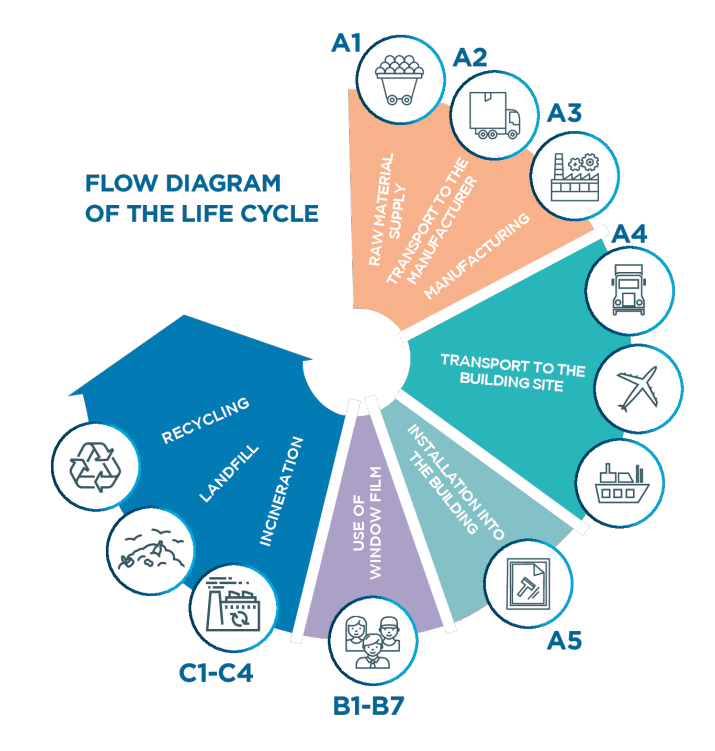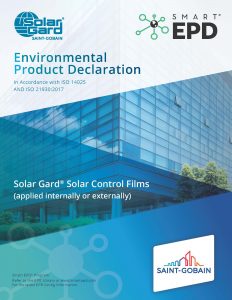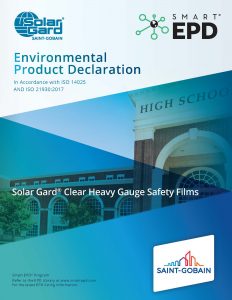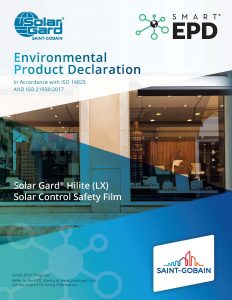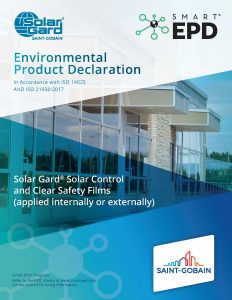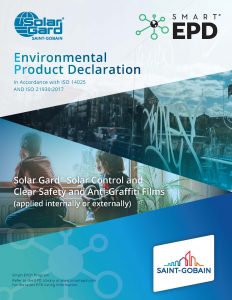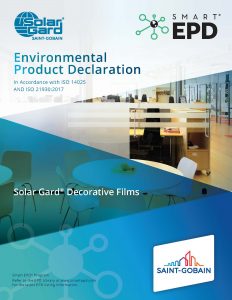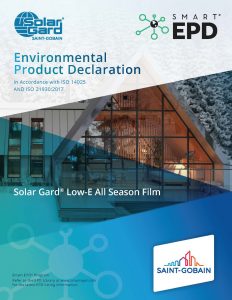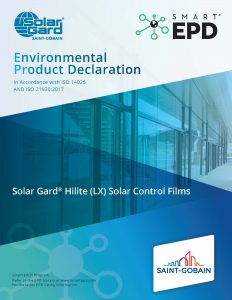Energy Efficiency & Sustainability
Solar Gard’s architectural films now carry an Environmental Product Declaration (EPD), certified by The International EPD System®.
The certified lineup includes 79 films—solar control, safety and security, Low-E, SENTINEL™ (interior/exterior), and decorative options. These films help reduce energy use, improve comfort year-round, and boost safety by reinforcing glass against breakage, impacts, and intrusion.
To view the full EPDs, visit environdec.com/library and search “Solar Gard.”

Why Solar Gard Window Film?
25% Lower Cooling Costs
Solar Gard window film blocks a large portion of solar energy-reflecting some, absorbing the rest so less heat makes it inside. Even a few degrees can cut cooling costs by up to 25%
Compliance & Certifications
Our films block 99% or more harmful UVA and UVB rays and are equivalent to SPF 285. We are proud to be among Skin Cancer Foundation’s recommended products.
Sustainability You Can Trust
Select Solar Gard architectural films are the first in the United States with an EPD. Apply our films with confidence that they meet LEED standards for environmental impact.
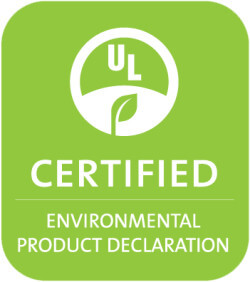
Similar to a food label, an EPD provides a user with information on the environmental impacts and benefits of products.
The UL EPD certification mark indicates that UL has independently reviewed and certified the manufacturer’s environmental impact disclosure that constitutes the EPD. For more information, visit ul.com/epd
LEARN MORE
SOLAR GARD WINDOW FILM
A Sustainable Solution to Improving
Building Energy Efficiency
Compared to replacing windows, the embodied carbon of Solar Gard films is at least 30 times less than new windows. In addition to saving energy, Solar Gard’s architectural solar control window films are proven to be carbon negative and have a net positive environmental impact worldwide.
Saint-Gobain Solar Gard EPDs
Solar Gard® Window Films protect against solar heat and help to reduce the risks in case of glass breakage. The Solar Control Window Films can help to reduce the operational costs and carbon footprint of buildings.
In many cases, Solar Gard solar control window films are carbon neutral within one month of installation. Solar Gard window films are both carbon-effective and cost-effective, reducing a building’s carbon footprint more effectively and for less money than new windows and low-e coatings.
Whether your goal is to reduce operating costs, decrease carbon emissions or create a more comfortable and productive environment, understanding your options is critical.
Your buildings’ windows offer one of the best opportunities for a solid return on investment for energy savings. Solar energy enters through windows and causes heat to build up inside the building, leading to uncomfortable hotspots and an increased need for air conditioning.
With proven heat-rejection properties, Solar Gard architectural solar controlwindow films can help your home or business consume up to 30%¹ less energy for cooling, by keeping interior temperatures more stable. This reduces the need for air conditioning while moderating peak usage and allowing yourcooling system to operate more efficiently.
IN FACT:
- One square meter of a low-e wood window, the type with the smallest carbon footprint, has a carbon cost of 444 kilograms. The carbon cost of Solar Gard window film is less than one kilogram per square meter.1
- Solar Gard window film saves 100 times more GHG emissions from entering the atmosphere than is used and/or created during its manufacture.
- Solar Gard 46 Architectural solar control window film covered in the EPD sold during 2010-2011 will save 2.2 million tons of CO2 from entering the atmosphere over their lifetime.
